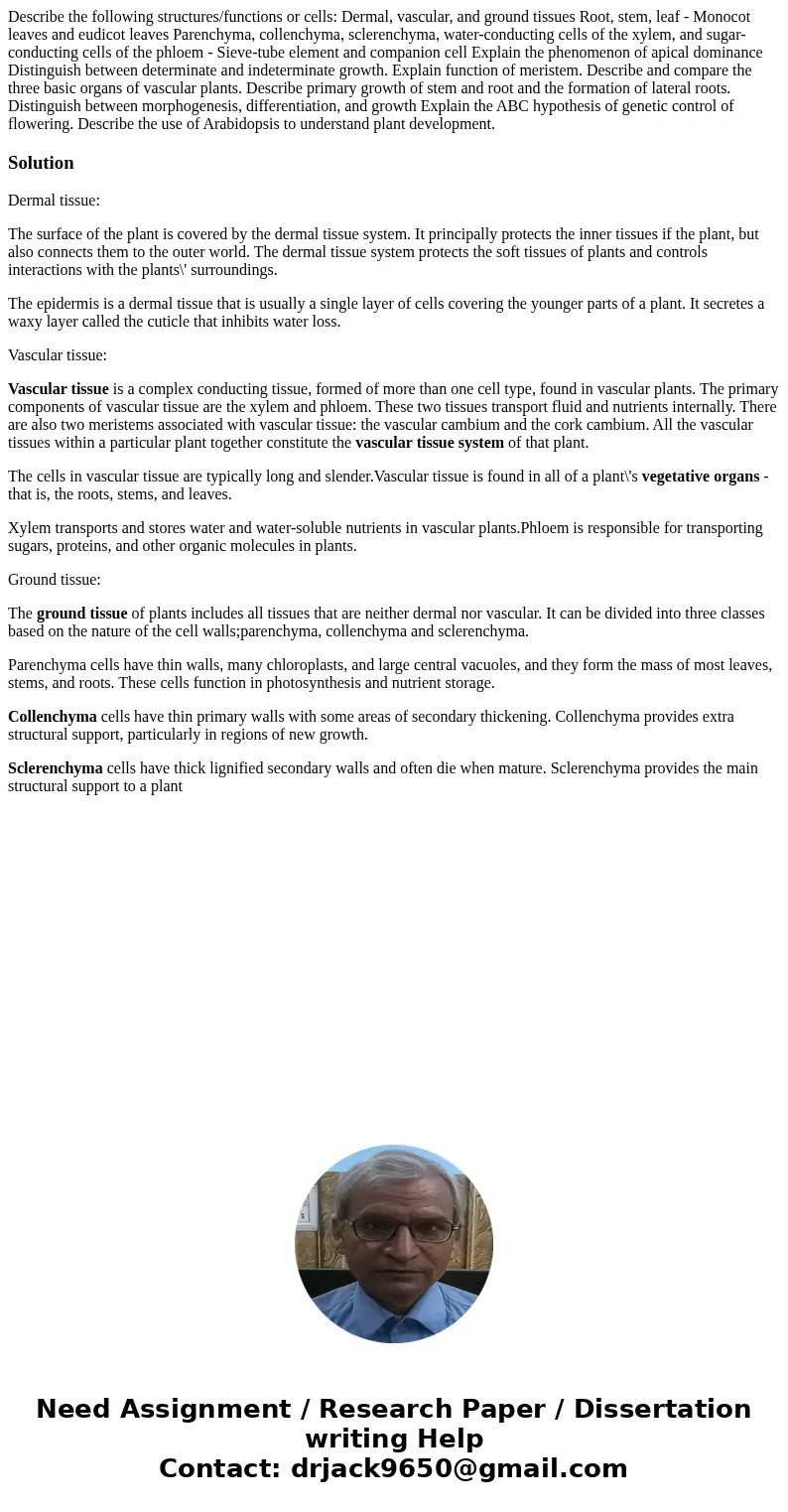Describe the following structuresfunctions or cells Dermal v
Solution
Dermal tissue:
The surface of the plant is covered by the dermal tissue system. It principally protects the inner tissues if the plant, but also connects them to the outer world. The dermal tissue system protects the soft tissues of plants and controls interactions with the plants\' surroundings.
The epidermis is a dermal tissue that is usually a single layer of cells covering the younger parts of a plant. It secretes a waxy layer called the cuticle that inhibits water loss.
Vascular tissue:
Vascular tissue is a complex conducting tissue, formed of more than one cell type, found in vascular plants. The primary components of vascular tissue are the xylem and phloem. These two tissues transport fluid and nutrients internally. There are also two meristems associated with vascular tissue: the vascular cambium and the cork cambium. All the vascular tissues within a particular plant together constitute the vascular tissue system of that plant.
The cells in vascular tissue are typically long and slender.Vascular tissue is found in all of a plant\'s vegetative organs - that is, the roots, stems, and leaves.
Xylem transports and stores water and water-soluble nutrients in vascular plants.Phloem is responsible for transporting sugars, proteins, and other organic molecules in plants.
Ground tissue:
The ground tissue of plants includes all tissues that are neither dermal nor vascular. It can be divided into three classes based on the nature of the cell walls;parenchyma, collenchyma and sclerenchyma.
Parenchyma cells have thin walls, many chloroplasts, and large central vacuoles, and they form the mass of most leaves, stems, and roots. These cells function in photosynthesis and nutrient storage.
Collenchyma cells have thin primary walls with some areas of secondary thickening. Collenchyma provides extra structural support, particularly in regions of new growth.
Sclerenchyma cells have thick lignified secondary walls and often die when mature. Sclerenchyma provides the main structural support to a plant

 Homework Sourse
Homework Sourse